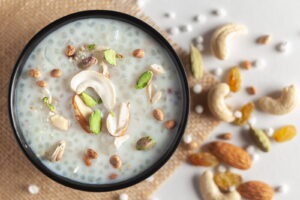Trichosanthes cucumerina, often known as snake gourd, is known by a variety of common names, including Chichinda or Padwal in Hindi, Potlakaaya in Telugu, Chichinga in Bengali, Pudalankaai in Tamil, and Padavalanga in Malayalam.
Since ancient times, this green vegetable has been valued for its tremendous therapeutic significance, which is well-documented in Ayurvedic writings. Today, it is still praised for its enormous health advantages and is frequently used to treat ailments of the stomach, liver, and skin, to mention a few. It is also commonly used in popular local cuisine throughout India.
In South-East Asian nations including India, Sri Lanka, China, Nepal, and Indonesia as well as the drier southern portions of Australia, snake gourd naturally grows in the wild.
Read also: The Unhealthiest Canned Foods on the Planet
Nutritional Content In Snake Gourd
snake gourd vegetables, seeds, leaves and juice extracts are enriched with a multitude of crucial fundamental dietary components like carbohydrates, fats, proteins and fibers, vital trace compounds such as Vitamin A, Vitamin B6, Vitamin C and Vitamin E and minerals.
Proteins, Fats, Fibre , Carbohydrates, Phosphorous, Sodium, Magnesium, Zinc, vitamins, Vitamin A , Vitamin E, Flavonoids, Carotenoids, Soluble and insoluble dietary fibre Phenolic acids.
Properties of Snake Gourd
Snake gourd might have the following properties:
- antioxidant
- anti-inflammatory properties (may help alleviate reaction of the body to any injury or irritation)
- beneficial for the stomach (gastroprotective)
- help in lowering the blood glucose level (anti-diabetic)
- Help reduce fever (anti-pyretic)
- effective against microorganisms (anti-microbial)
- help against worm infestation in the stomach (anthelmintic)
Uses of Snake Gourd for Overall Health
1. Snake Gourd Accelerates Weight Loss
Those who firmly adhere to a diet program to lose weight, especially those who have diabetes, can routinely consume snake gourd because it is low in calories and high in critical nutrients. Additionally, snake gourd offers nutritional fibers that are simple to process in the stomach, prolonging satiety, lowering cravings, and promoting fat-burning at a faster rate.
read also: The #1 Drinking Habit for Faster Weight Loss
2. Augments Heart Function
Since snake gourd contains very little cholesterol, it can be safely included in the diet on a daily basis to support heart health. The boiling vegetable can be easily added to many traditional home-cooked Indian foods since it enhances blood flow to and from the heart, ensuring that cardiac muscles perform at their best.
3. uses of snake gourd for diabetes
To investigate the snake gourd’s potential as an anti-diabetic, a study using albino rats was carried out. This study discovered that snake gourd ethanolic extract may have a beneficial impact on blood sugar levels. Snake gourd’s ability to absorb into nearby tissues may aid in improving the body’s ability to tolerate glucose. Consequently, it might be advantageous for diabetes.
4. Detoxifies The Kidneys
Snake gourd encourages the body’s natural excretory system to remove wastes and kidney stones. It increases the fluid output within the kidneys, quickly eliminating toxins that have collected while also ensuring that the body’s internal organs are properly hydrated. Snake gourd juice promotes the kidneys’ and bladder’s normal functions.
read also: Gabapentin Addiction: Side Effects, Detox Withdrawal, and Treatment
5. Enhances Digestive System
Snake gourd has a significant fiber content, which helps to prevent instances of constipation, bloating and cramping of the stomach, upon ingestion of a heavy meal. Moreover, its laxative nature regulates bowel movements, thereby easing any discomfort experienced in the gut.
6. Strengthens Respiratory Processes
Because of its inherent expectorant properties, snake gourd can easily release any extra mucus or phlegm and expel it from the respiratory tract. This has a significant positive impact on lung health and guards against allergies and breathing problems like asthma.
7. Complements Ketogenic Diet
Every keto diet always includes non-starchy vegetables. In this aspect, snake gourd might be a perfect addition to a keto diet, which focuses on reducing calorie intake by reducing carbs. Snake gourd is naturally low in carbohydrates and sugars. Regular lunches on the ketogenic diet might include a quick and easy meal of boiling sliced snake gourd vegetables and seasoning with salt and pepper.
read also: Apple Cider Vinegar Dosage: How Much Should You Drink per Day?
8. Resolves Acid Reflux
Snake gourd naturally has a high water content, is low in fat, and contains no cholesterol, making it an excellent remedy for a variety of digestive ailments. Along with the gastrointestinal conditions of acid reflux, heartburn, and GERD, the backward flow of partially digested food and stomach acid secretions causes nausea, pain, and discomfort (gastroesophageal reflux disease).
9. Remedies Hypertension
The seeds of snake gourd supply potassium, a key mineral that maintains electrolyte balance in the body, besides isoflavone antioxidants, that prevent a sudden rise in blood pressure.
By relieving extreme tension in the heart vessels – arteries, veins and capillaries, while promoting the smooth flow of nutrients to bodily organs via circulatory passages, snake gourd seeds mend instances of hypertension, regulating blood pressure.
read also: Eating Disorder Symptoms, Causes, and Effects
10. Combats Skin Infections
The residue derived from snake gourd leaves has astringent traits. This helps in neutralizing the highly enflamed spots on skin. It also efficiently reduces any boils, pus or carbuncles on the areas of the skin affected by allergies, fungal infections, environmental pollutants and sun rays.
What is snake gourd called in Hindi?
Different languages have different names for snake gourd. In Hindi, it is referred to as Chachinda. Pudalankaai in Tamil, Potlakaaya in Telugu, Chichinga/Chichingae in Bengali, Padabali in Gujarati, Galatori in Punjabi, Aduvulakaayi in Kannada, and Padavalanga in Malayalam are a few of its other names.
snake gourd recipe
- Snake Gourd Kootu
- Snake Gourd Thayir Pachadi
References:
1. Liyanage R, Nadeeshani H, Jayathilake C, Visvanathan R, Wimalasiri S. Comparative Analysis of Nutritional and Bioactive Properties of Aerial Parts of Snake Gourd (Trichosanthes cucumerina Linn.). Int J Food Sci [Internet]. 2016;2016. Available from: https://www.ncbi.nlm.nih.gov/pmc/articles/PMC5138480/
2. Sandhya S, Vinod KR, Chandra Sekhar J, Aradhana R, Nath VS. An updated review on Tricosanthes cucumerina L. Int J Pharm Sci Rev Res [Internet]. 2010;1(2):56–60. Available from: https://www.globalresearchonline.net/volume1issue2/Article 011.pdf

